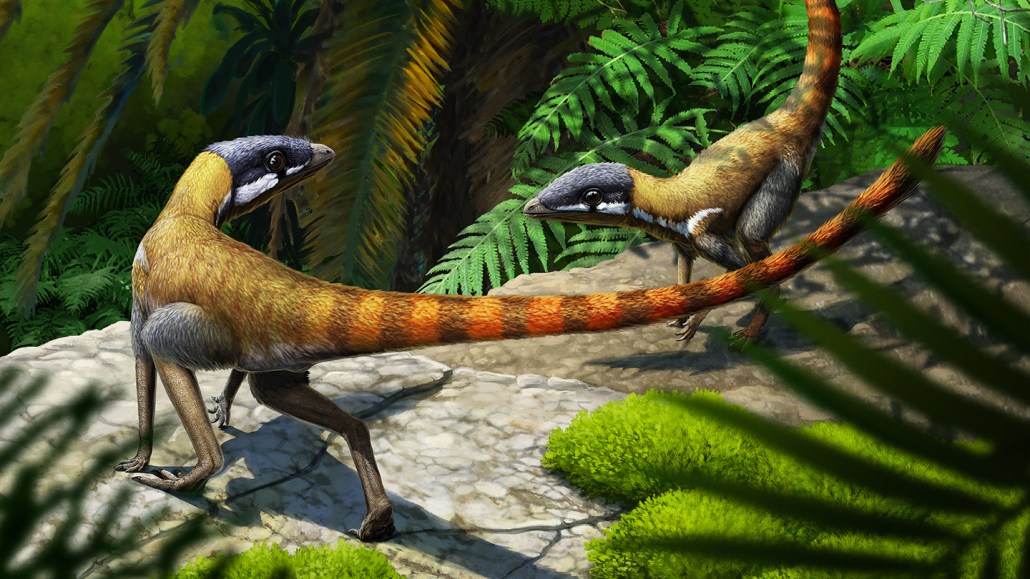Questions for ‘Sprinting reptiles may have been forerunners of soaring pterosaurs’

Tiny Scleromochlus taylori, shown here in an artist’s rendition, was a two-legged, ground-dwelling reptile. It was a close relative of pterosaurs, the iconic winged vertebrates of the Age of Dinosaurs.
Gabriel Ugueto
Share this:
- Share via email (Opens in new window) Email
- Click to share on Facebook (Opens in new window) Facebook
- Click to share on X (Opens in new window) X
- Click to share on Pinterest (Opens in new window) Pinterest
- Click to share on Reddit (Opens in new window) Reddit
- Share to Google Classroom (Opens in new window) Google Classroom
- Click to print (Opens in new window) Print
To accompany ‘Sprinting reptiles may have been forerunners of soaring pterosaurs’
SCIENCE
Before Reading:
- You are given the fossilized imprint of an unknown creature and asked to answer the following questions: (1) Is this creature a meat-eater or plant-eater? (2) Does this creature fly, walk or swim? Describe how you would try to use the fossilized remains to answer each question. Be sure to specify the parts of the fossil that you would investigate for each question.
- What does it mean when scientists say that a species “evolved” from another species?
During Reading:
- What year were the bones of Scleromochlus taylori first discovered? How many individuals were found?
- Pterosaurs were the first vertebrates to master what ability?
- What does microcomputed tomography allow scientists to do? What did scientists discover when they used this tool to examine S. taylori fossils?
- Describe one similarity between the S. taylori fossils and those of pterosaurs. Describe one difference. Based on examining the fossils, how do scientists figure S. taylori moved around?
- Where in the body is the femur located? What new insight did scientists gain from examining the femur of S. taylori?
- What were lagerpetids? Explain the relationship between lagerpetids and S. taylori.
- How many million years ago were pterosaurs believed to have first appeared?
After Reading:
- DNA comparison can provide scientists with another powerful tool for working out evolutionary relationships between species. Generally, the more similar the DNA between two species, the more closely related those species are likely to be. So why do you think the scientists in this story didn’t use DNA to make their comparisons? Now imagine another scenario — a scientist discovers the frozen bodies of two well-preserved woolly mammoths. She suspects these mammoths are closely related to present-day elephants. What technique would you advise her to use to test her theory? Explain your answer.
- A student is trying to use fossils to determine which of two extinct sea creatures was more prevalent. The first is a jellyfish-like creature. The other is a large, bony fish. While the student discovered dozens of bony fish fossils, he found only two faint imprint fossils of jellyfish. The student concludes that because he found more bony fish fossils than jellyfish, the bony fish must have been more prevalent. To what extent do you agree or disagree with the student’s conclusion? Describe another factor that may account for the difference in the number of fossils found.